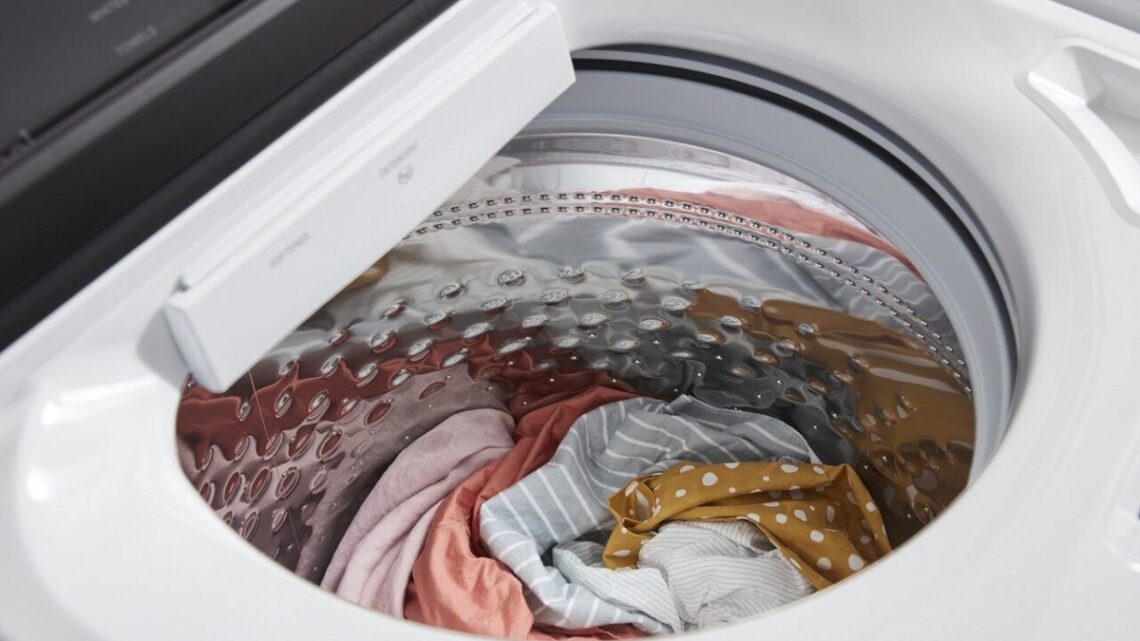
How to use a washing machine – A step-by-step guide
February 28, 2023What do you think your laundry habits are like? How you use a washing machine will affect your clothes and water and energy use. That’s why every owner, whether a first-timer or an old-timer, should learn or relearn how to use their washing machine properly to maximize its benefits.
To get the most efficient results, follow this step-by-step guide on how to wash clothes in washing machine.
- Check the clothes tag for care instructions
- Sort your laundry
- Select the right setting
- Add detergent, softeners and boosters
- Fill your washer with clothes and turn on the washer.
Step 1: Check the clothes tag for care instructions
Although most clothes can be washed in a machine, you should always check the care label, especially for woollens and delicates. Some need to be hand-washed or dry-cleaned. Some cannot withstand bleach or hot water. But nowadays, modern washers have programs specifically designed for targeted care of different clothes and fabrics. So, consider the model of the machine when reading the care instructions. This will be helpful in sorting later and in planning the cycles you’ll use.
Step 2: Sort your laundry
One cycle doesn’t fit all. Different kinds of fabrics require different ways of care, so don’t mix all of your clothes in one load. While it’s tempting to put everything in there all at once, it’s crucial not to skip this step because it will help maintain your clothes’ colour, shape, and overall quality. Divide the clothes into different baskets depending on your load for the day.
– Sort by colour
Sort clothes according to light and dark colours. If you like to be more thorough, separate the pure whites and jeans too. This will prevent the bright or deep dyes from spilling into other clothes. For new clothes, make sure you turn them inside out, as they are more likely to lose some colour in the first wash.
– Sort by fabric
Different fabrics shouldn’t be washed, agitated, or dried in the same manner as other fabrics. Protect them from damage by separating them according to weight and/or type of fabric. Do not mix heavier items such as blankets and towels with lighter ones like delicates and lingerie. Lint-shedding clothes and lint-attracting ones like corduroy and microfibre should also be separated.
Put delicates and small garments in a laundry bag
Put small or delicate items like silks, lace, or lingerie in mesh bags to avoid damage when they rub against each other. Clothes with zippers, buttons and snaps can snag them, so it is best not to mix them.
Step 3: Select the right settings
The settings you choose will determine how your clothes are washed and spun and how your water and energy will be utilized. So, avoid guessing which buttons to press. You can get the most out of your washing machine when you are well-versed with all its special features and know which to choose.
– Select the right temperature
Water temperature is crucial to ensure that your clothes last longer. Hot water is more effective in eliminating bacteria. But it can consume more energy, fade colour, set stains and shrink clothes. It is best to use this for stained items such as cleaning cloths and towels. For all other items, use cold water as it is more gentle on your clothes.
– Select the right program
The washer cycle you choose will decide how your clothes are protected. You might be left with faded shirts or damaged delicates if you choose the wrong cycle. This is where checking the care label comes in. Be sure to follow the guidelines to get the best results from your washing machine.
Washing machine programs are created to specifically care for specific fabrics, so match the cycle with your load. Does your load mostly consist of whites? Coloured? Or delicates?
Every cycle consists of two distinct speeds: the washing speed at which the clothes are tumbled with water and the spin speed at which the items are spun to get rid of water. The two speeds vary for each cycle, but as a general thumb rule, more agitation provides greater cleaning power, while less agitation will provide more fabric care.
There are a variety of washing machine programs per brand or model, but nearly all will have the most basic ones: Cotton or normal, permanent press or mixed, and delicates.
Step 4: Add detergent, softeners, and boosters
When selecting the right detergent, know whether your washing machine requires a high-efficiency type. If so, look for products with the HE symbol. They’re made to reduce soap suds, so you use less water.
Fabric softener, loading detergent and other cleaning agents vary based on the type of detergent you’re using and your washing machine model. You should refer to your machine manual to learn how to add them. You should also check your detergent box for the right amount to use.
Step 5: Load your washer with clothes and turn on the washer.
You can now finally load your clothes. Do not overload the drum to allow your clothes space to tumble and for water to circulate effectively. As a general thumb rule, allow a hand-width of space between the top of your drum and your load. It’s also best to divide them loosely inside. Refer to the instruction manual of your washing machine to determine how much you can really fit in there.
Some models require you to indicate the load size to get the best results for each cycle. Here’s a guide:
- Small load: approximately 1/3 of the drum
- Medium load: approximately 1/2 of the drum
- Large load: around 3/4 of the drum
After the detergent cycle is complete, it is important to rinse clothes in washing machine to remove any remaining soap residue.
How to keep your washing machine clean and fresh
Your clothes shouldn’t only be the only ones clean. After washing, don’t forget to clean your washing machine to ensure it works at its best for longer.
- After the spin cycle, immediately remove your clothes from the washer to prevent mould from forming inside the drum.
- After each laundry session, leave the front loader’s door open to allow air circulation.
- You can use a washing machine cleaner once every month to give it a deeper clean. Place it in the detergent dispenser or drum, then run the hottest cycle or the special cleaning program.
Remember these basics
Washing machines are diverse in the way they operate and their special programs, but these are the basics you should know to operate any model properly. Ultimately, how you wash your clothes will depend on the washer you choose. The right one should be more than capable of meeting all your requirements and making laundry easier.







